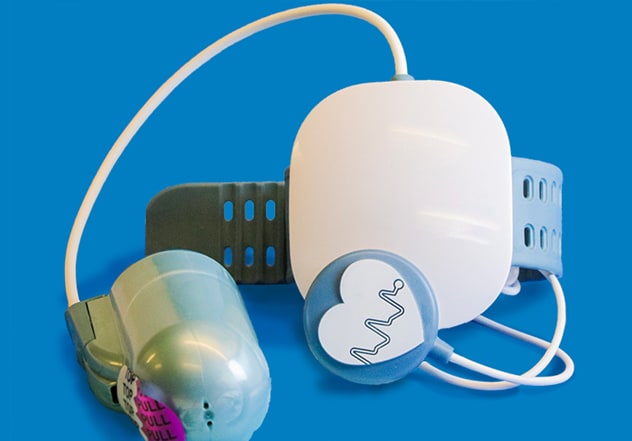April 03, 2020
Undiagnosed and untreated obstructive sleep apnea (OSA) is linked with serious implications, including increased risk of cardiovascular disease, stroke, metabolic disease and hypersomnia; increased driving and workplace errors; and decreased quality of life.
The economic consequences are significant for individuals and for society at large. For example, research published in the Journal of Clinical Sleep Medicine in 2020 confirms that between 2006 and 2013, Medicare beneficiaries in the US with untreated obstructive sleep apnea cost taxpayers an additional $19,566 per year and used more outpatient, emergency, inpatient, prescription and overall health care services than did a matched control population without OSA.
"Other studies confirm that, despite evidence showing that untreated OSA is associated with early mortality, a high percentage of individuals with OSA remain undiagnosed despite otherwise adequate access to health care," says Timothy I. Morgenthaler, M.D., Pulmonary and Critical Care Medicine at Mayo Clinic in Rochester, Minnesota. "One reason may be that there are too many barriers to obtaining a diagnosis of OSA. Access and delays to testing are common.
"Reducing the barriers to diagnosis has been an emphasis of our practice at the Mayo Clinic Center for Sleep Medicine. Our goal is to reduce the friction patients experience when seeking care for suspected OSA by reducing the time and effort patients expend in obtaining accurate diagnoses and personalized treatment plans."
Split-night protocol
In past decades, diagnosis of OSA required an attended in-lab polysomnogram, which was often performed as a two-night-study — the first night being purely diagnostic and the second being performed to titrate the pressures required for positive airway pressure therapy. From the mid-1980s onward, Mayo Clinic Center for Sleep Medicine was a pioneer in using a split-night protocol for the majority of patients: The diagnosis was confirmed during the first half of the night, and the remainder of the night was used for positive airway pressure titration.
This practice has become a standard of care because it makes the best use of resources and enhances patient convenience. Many studies show equivalence of outcomes to those of two-night test protocols. "By utilizing split-night studies, scoring them in real-time and interpreting them the morning following testing, we are able to provide a consult, complete the polysomnogram and discuss treatment alternatives in the same 24-hour period, reducing the time spent in health care for our patients," says Dr. Morgenthaler.
Home sleep apnea tests
 Home sleep apnea test device
Home sleep apnea test device
This device can be sent to patients, who can apply and use it in their own sleep settings. The data are uploaded to a secure cloud-based server via an app that patients download to their phones. The data are interpreted by a sleep medicine specialist and, in the right clinical setting, can provide an accurate diagnosis of obstructive sleep apnea.
In recent years, an increasing number of patients are being diagnosed with home sleep apnea tests (HSATs). Although HSATs are not appropriate for all patients, at the Mayo Clinic Center for Sleep Medicine over 40% of patients diagnosed with OSA now receive HSATs.
"While many patients will see us in consultation, be sent home (or to a local hotel) for testing, and return the next day to discuss findings and treatment plans, we have recently added two technologies that enable even more streamlined and convenient evaluations: mail-out, disposable HSAT devices and Connected Care video visits," says Dr. Morgenthaler.
Once it has been decided that an HSAT might be appropriate testing for a given patient, the one-use disposable device can be sent home with or even mailed to the patient, who can apply it without assistance, sleep with it in a bed of choice and then discard the device.
The data are uploaded via smartphone app to a secure cloud-based database, where they are forwarded to the Mayo Clinic Center for Sleep Medicine for a sleep medicine specialist's interpretation. The results may then be discussed with the patient either at a face-to-face visit or — if more convenient — via a video visit. The added convenience is significant for patients who would otherwise need to add travel distance and time away from work to complete their evaluations.
New alternatives
Dr. Morgenthaler concludes: "Polysomnogram and HSAT are currently necessary for the appropriate diagnosis of patients with suspected OSA. However, there is a good deal of ongoing research to make diagnosis even easier still for patients. Currently available consumer devices — apps, wearables or touchables — are not yet accurate enough or approved for medical diagnosis, but we have been involved in research to help understand what their role is in clinical medicine.
"An under-the-bed testing device will soon be approved for diagnosis of OSA in Europe; FDA approval will almost certainly be sought. We are engaging in research that may enable touchless measurement of both sleep and breathing with sufficient accuracy to diagnose sleep apnea and other sleep disorders in the near future.
"The field is progressing, with a major focus on reducing the time and effort patients and their families spend in pursuing health care, so they can spend more time being healthy. We already provide a significantly lower friction service for those seeking sleep apnea help, but in the future we envision even greater capabilities to serve patients in their homes. As in diagnosis, we are seeking ways to personalize therapy for patients while decreasing the time and resources they expend to find solutions for their health problems."
For more information
Wickwire EM, et al. Older adult US Medicare beneficiaries with untreated obstructive sleep apnea are heavier users of health care than matched control patients. Journal of Clinical Sleep Medicine. 2020;16:81.
Center for Sleep Medicine. Mayo Clinic.